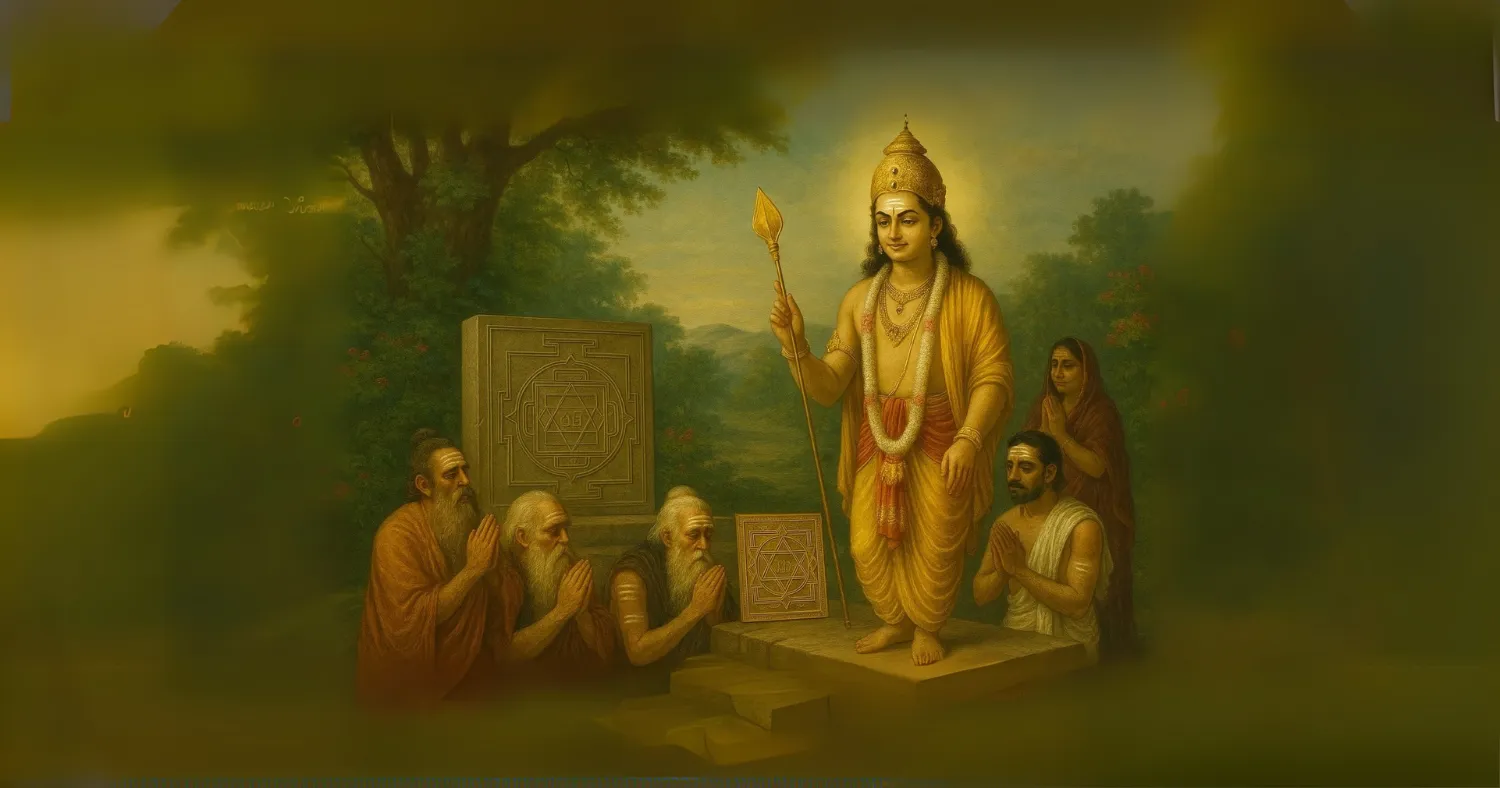Introduction to Lord Murugan and His Yantra
Lord Murugan, is known as Kartikeya, Subramanya, Skanda, and Saravanabhava. He has another name popular in South India. People name their kids as Saravanan, after Muruga or Lord Kartikeya. He holds immense spiritual importance in Sanatana Dharma. The Skanda Purana is an exhaustive treatise and one of the ancient Puranas dedicated to Lord Skanda or Murugan. Revered widely across India, especially among Tamils, Murugan represents youthfulness, courage, divine wisdom, and spiritual power. Central to Murugan worship is the powerful Subramanya Yantra, also known as Saravanabhava Yantra, which encapsulates his divine energy.
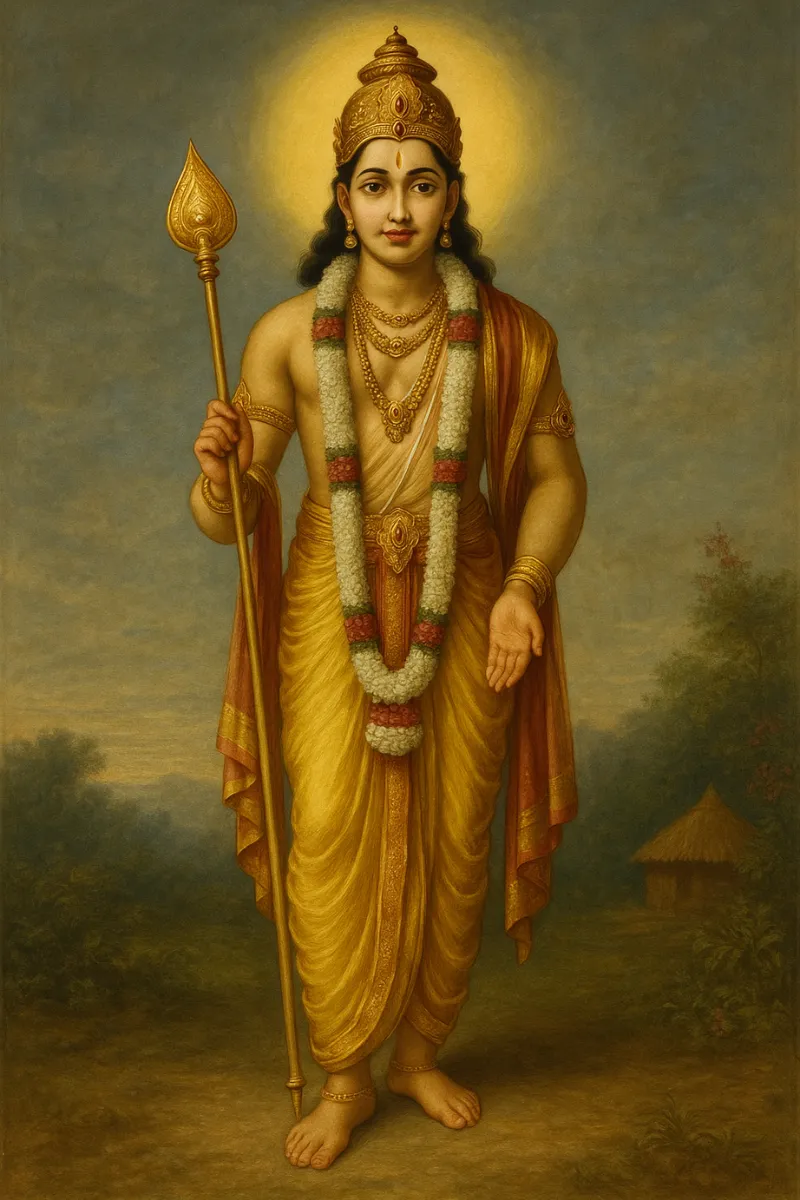
Significance of Murugan Yantra
The Murugan Yantra is embedded with the Shadakshari mantra “Sa-Ra-Va-Na-Bha-Va” representing the six faces of Lord Murugan, symbolizing protection from all six directions. This Yantra is intricately designed to channel the powerful vibrations of Lord Murugan, amplifying the spiritual benefits to devotees.
Why We Need an Energized Yantra
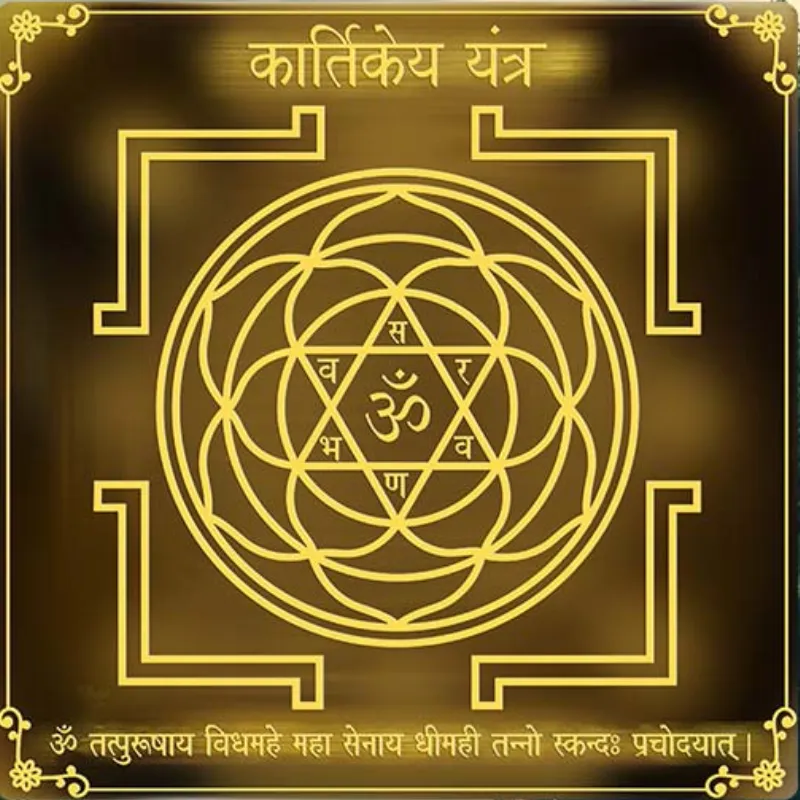
While participating in rituals like pujas or homas provides immediate positive vibrations, these vibrations are temporary. Ancient Sanatani sages innovated ways to store these divine energies permanently. They discovered that metals like gold, silver, copper, iron, and lead could preserve spiritual vibrations due to their excellent conductivity.
The most powerful material among all is the Bhoja Patra, made out of the bark of the Himalayan Birch tree. It becomes especially potent if it is made out of energized materials such as KumKum, Ashtagandha, Kesar and Pomogranate Stick with scented water and other powerful Natural elements.
Copper, being both efficient and economically viable, became the ideal choice for crafting Yantras. Energized Yantras thus serve as reservoirs of sacred vibrations, continuously benefiting devotees.
Energizing the Subramanya Yantra
The process of energizing a Yantra involves chanting specific mantras precisely and repeatedly as per scriptural guidelines. A Yantra is beneficial only when properly energized.
How to Energise Subramanya Yantra
To energise the Subramanya or Saravanabhava Yantra, practitioners chant mantras in three main ways:
- Uttama (Best Method): 125,000 repetitions over 40 or 48 days (one mandala).
- Madhyama (Better Method): 100,008 repetitions over 40 or 48 days.
- Sadhyam (Easy and Effective): 1,008 repetitions daily for 108 days.
Specific Mantras for Energizing the Yantra
The Subramanya Yantra integrates the bija mantra “Soum” and the Shadakshari mantra variations:
- Om Soum SaRaVaNaBaVa
- Om Soum RaVaNaBaVaSa
- Om Soum VaNaBaVaSaRa
- Om Soum NaBaVaSaRaVa
- Om Soum BaVaSaRaVaNa
- Om Soum VaSaRaVaNaBa
Alternatively, chanting the core mantra “Om Soum Sa-Ra-Va-Na-Ba-Va” 100,000 times in 40 days bestows exceptional benefits.
Specialized Moola Mantras for Specific Goals
- For Akarshana Shakthi (Attraction and Charm):
“Om Soum VaSaRaVaNaBa, Sreem Kleem Hreem Aim Soum Namah” – recited 100,000 times in 40 days. (To be done under a Guru only. Do not risk doing alone) - For Vasikaran (Influence and Control):
“Om Houm RaVaNaBaVaSa, Sreem Kleem Hreem Aim Soum Namah” – recited 100,000 times in 40 days. (To be done under a Guru only. Do not risk doing alone) - For Mantra Sadhana (Spiritual Power):
“Om Houm VaNaBaVaSaRa, Sreem Kleem Hreem Aim Soum Namah” – recited 100,000 times in 40 days. (To be done under a Guru only. Do not risk doing alone)
Benefits of Energized Subramanya Yantra
A correctly energised Subramanya Yantra provides several significant benefits, including:
- Lakshmi Kadaksha (Wealth and Prosperity): Ensures continuous financial growth and prosperity.
- Sakala Karya Siddhi (Success in all endeavors): Ensures accomplishment of tasks without hindrance.
- Flourishing Business: Enhances commercial ventures and ensures profitability.
- Removal of Black Magic: Eliminates negative influences such as Pilli, Soonyam, and Kala Jadu.
- Enemy Removal: Protects from adversaries and negative intentions.
- Protection from Injuries and Accidents: Safeguards devotees physically.
Proper Maintenance and Care of Yantra
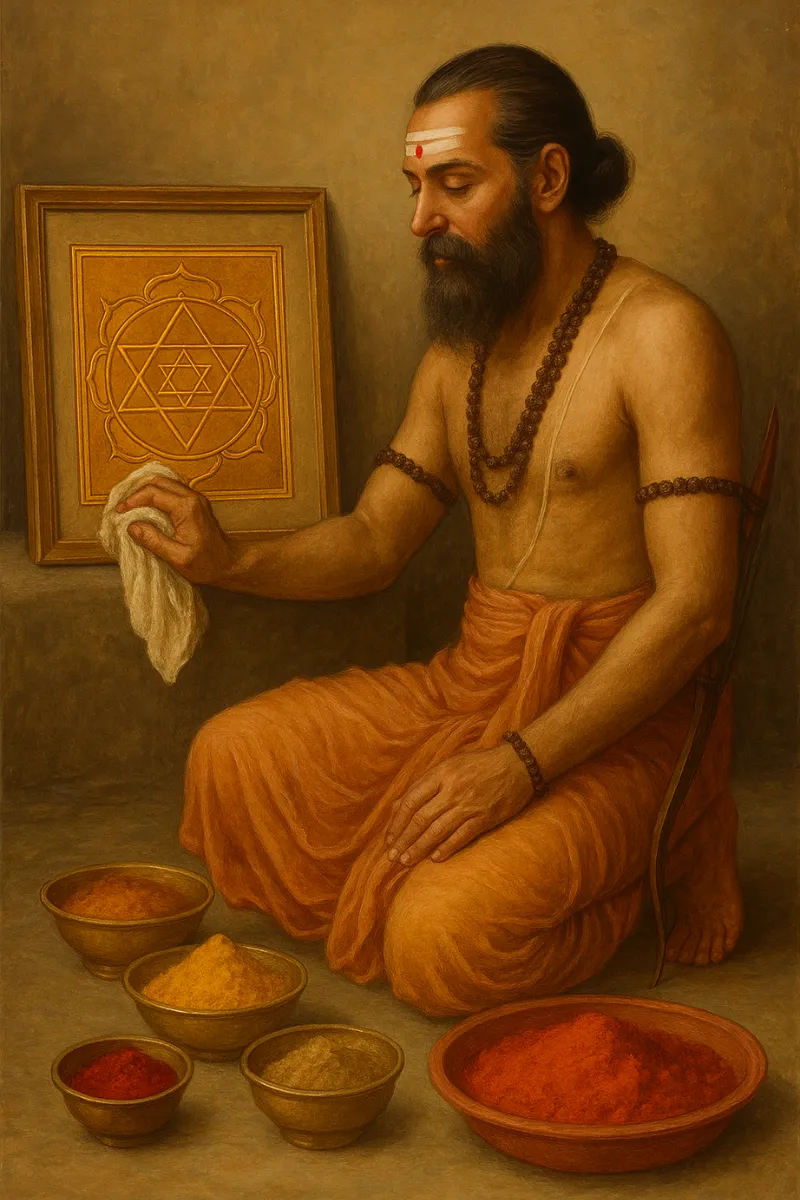
To ensure longevity and effectiveness of the Subramanya Yantra, follow these guidelines:
- Silk Cloth Wrapping: Always keep the Yantra wrapped in silk cloth, maintaining its purity.
- Daily Worship: Offer daily prayers, preferably after morning baths.
- Apply Kumkum or Sandalwood Paste: Enhance Yantra’s positivity and sanctity.
- Avoid Inauspicious Places: Do not carry Yantra to inauspicious events. If accidentally done, cleanse it with milk and water.
- Proper Placement: Ideally, keep it west-facing east unless specifically instructed otherwise.
Lord Murugan in Vedic Lore
Lord Murugan’s worship dates back to pre-Vedic times. The Rig Veda, the oldest scripture, references Murugan as Kumara endowed with golden radiance and wisdom. Murugan’s divine origin as Agnibhu (son of Agni) is found in Atharva Veda and Satapatha Brahmana.
Vedic References to Lord Murugan
Murugan appears under various names in Vedic literature:
- Agnibhu: Born from the divine fire of Shiva’s third eye.
- Sadasapati: Beloved by Indra for his valor.
- Hiranyagarbha: Symbolizing divine cosmic creation.
- Senanya: Commander-in-chief of celestial forces.
- Skanda, Subramanya, Sanatkumara: Supreme sage and youthful divine being, central to many Upanishads.
In the Chandogya Upanishad Sri Narada and Sri Sanata Kumara venerate Sri Murugan as the ultimate teacher of spiritual wisdom.
Cultural and Historical Importance
Lord Murugan occupies a unique and profound space in the spiritual and cultural consciousness of millions, especially among Tamil-speaking Hindus. Known as the “Tamil Kadavul” (தமிழ்க் கடவுள் ) or “Tamil God.” Sri Murugan bridges not only the ancient Sangam-era religious traditions with the Vedic framework but also transcends regional boundaries to find worship across Southeast Asia. His presence is both deeply historical and vibrantly contemporary, echoed in grand temples, poetic hymns, and transnational festivals.
Lord Murugan in Valmiki Ramayana
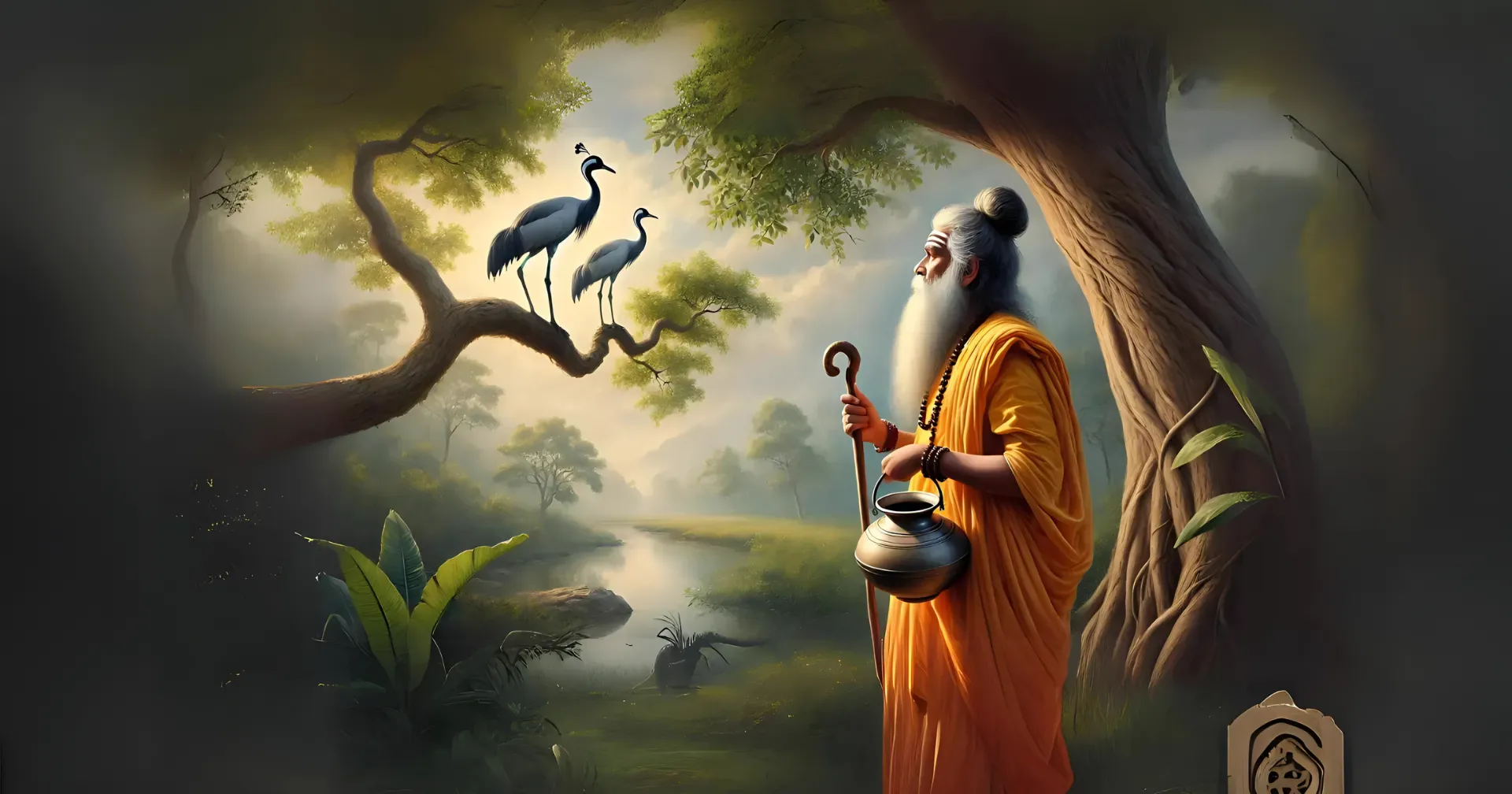
A lesser-known but spiritually potent episode in the Ramayana is in the Ayodhya Kanda, Sarga 37, that mentions the birth of Lord Kartikeya, about his 6 mothers and his connection with Lord Shiva and Agni Deva.
This invocation is deeply symbolic. Lord Murugan is regarded as the supreme guardian and spiritual general capable of bestowing victory, dharma, and inner strength. In the larger spiritual tapestry of the Ramayana, invoking Murugan at a critical juncture underscores his position as the force that upholds dharma by empowering warriors (like Sri Rama) with inner resolve, clarity, and divine favor.
Why Lord Krishna Identified as Skanda in the Bhagavad Gita
In the Bhagavad Gita, Chapter 10, Verse 24, Lord Krishna declares:
“Senaninam aham Skandah”( सेनानीनाम् अहं स्कन्दः ), “Among generals, I am Skanda.”
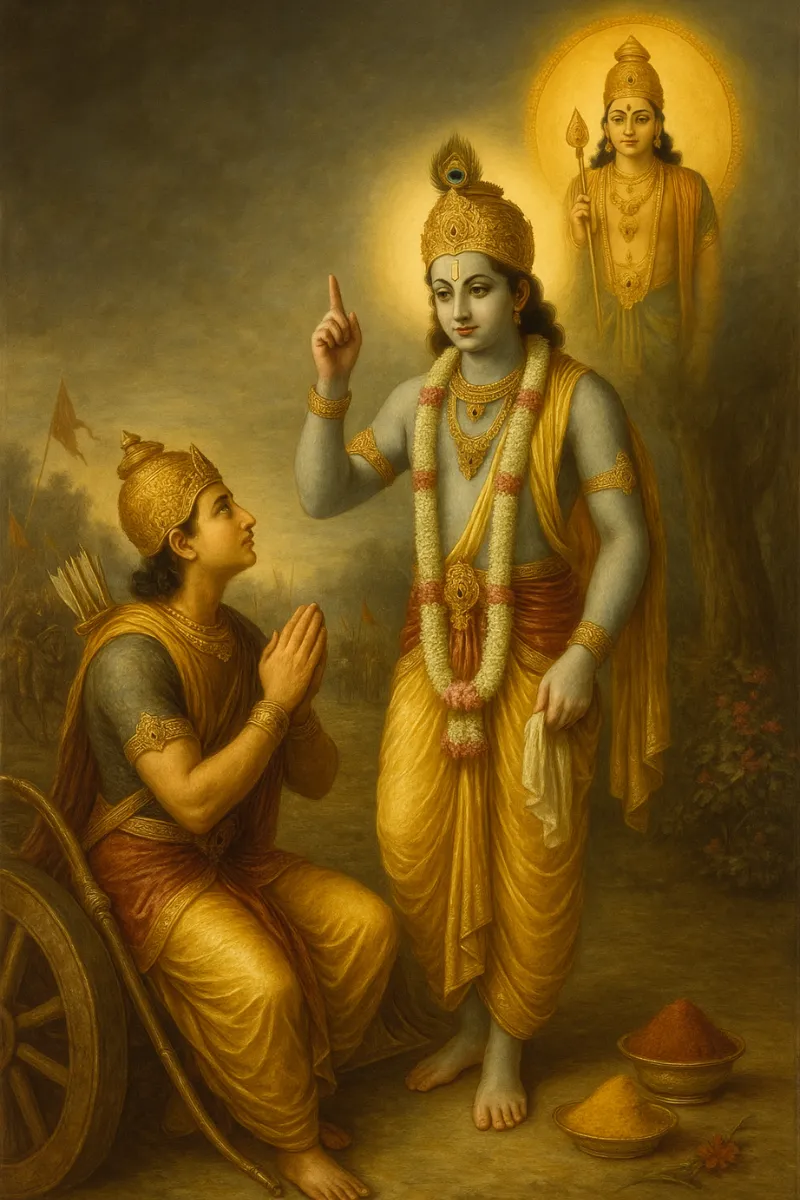
This verse is loaded with spiritual insight. Lord Krishna is the Supreme Brahman in human form. Bhagavan identifies himself with various supreme aspects of creation in this chapter of the Gita known as Vibhuti Yoga. Out of all divine commanders or deities of martial power, Krishna chooses Skanda (Murugan) as his vibhuti, his most exalted expression in that category.
Why Murugan? Because Murugan is not merely a warrior deity. He is the personification of spiritual valor, divine intelligence, and pure bhakti (devotion). Devotees such as Avvaiyaar are testimony to Bhakti in the line of the Kaumara Sampradaya popular in the Southern Part of Bharat.
Born from the fiery will of Shiva and infused with the wisdom of the cosmos, Murugan exemplifies divine leadership untainted by ego. He is youthful yet supremely wise, fierce yet compassionate, and powerful yet humble. In essence, he is the perfect spiritual general, an archetype of the enlightened warrior.
Thus, Lord Krishna’s declaration places Skanda above all other war gods, not due to his martial skill alone but due to his inner purity, detachment, and divine mission. He does not fight for conquest but for the restoration of cosmic order (dharma), much like Krishna himself. Sri Krishna shall not choose any deity who is ordinary but the one who is Brahman Himself. Sri Murugan is one such deity.
Spread of Murugan Worship to Southeast Asia
The worship of Lord Murugan spread far beyond the Indian subcontinent, especially with the movement of Tamil traders, scholars, and seafarers across the seas to Sri Lanka, Malaysia, Indonesia, Singapore, Thailand, and Myanmar.
In Malaysia, Lord Murugan’s presence is most visible in the Batu Caves Temple complex near Kuala Lumpur. This site features a colossal 140-foot golden statue of Lord Murugan, the tallest of its kind in the world. The temple, built inside a limestone cave, attracts millions of devotees and tourists each year.
Thaipusam Festival: A Living Cultural Heritage
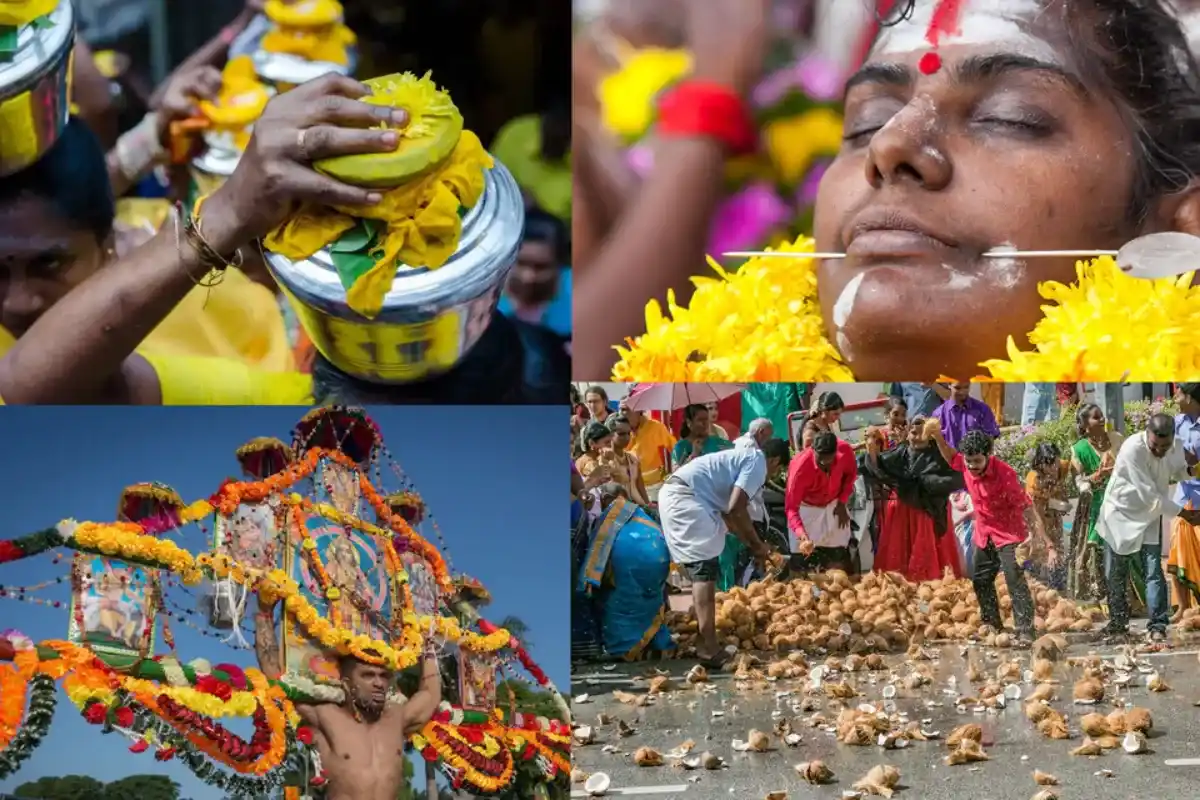
The Thaipusam festival, celebrated during the Tamil month of Thai (January–February), is one of the most striking religious events in Malaysia, Singapore, and other Tamil diasporic regions. This festival commemorates the day when Goddess Parvati gave Murugan the sacred spear (Vel) to defeat the demon Surapadman.
The rituals of Thaipusam involve intense acts of devotion and penance, such as carrying milk pots (paal kudam பால் குடம்), piercing the skin or tongue with small spears (vel), and walking barefoot for miles in pilgrimage. For many, this is an act of surrender, purification, and fulfilment of vows made to the deity. It is not seen as extreme suffering but as a transformational offering, an embodied prayer for grace, healing, or blessings.
The power of this festival lies not just in its pageantry, but in its fusion of ancient spirituality with communal solidarity. It is a celebration of Murugan’s role as the remover of darkness, pain, and spiritual ignorance.
Murugan Temples Across Asia
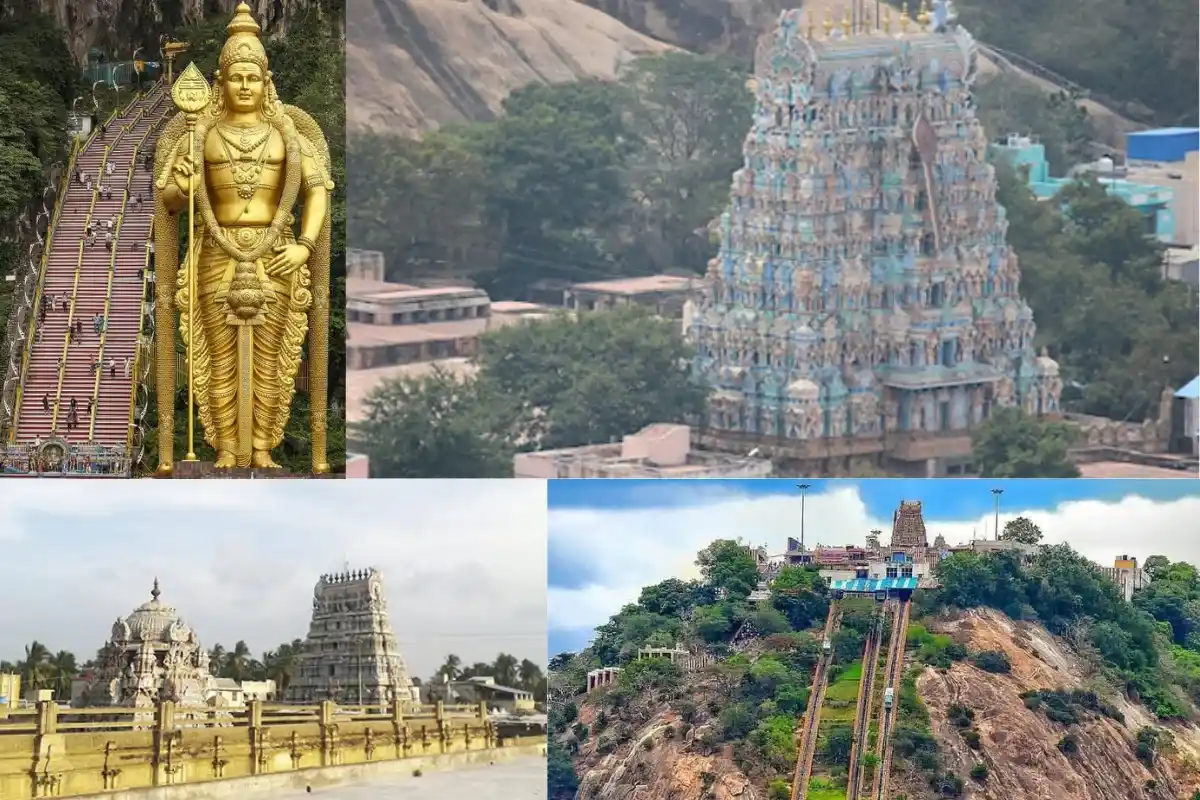
Apart from Batu Caves, notable Murugan temples across Asia include:
- Kataragama Temple in Sri Lanka: Worshipped by both Hindus and Buddhists, Lord Murugan is seen as a unifying figure between faiths.
- Subramanya Swamy Temple, Palani (India): Considered one of the six sacred abodes (Arupadai Veedu) of Murugan.
- Thiruchendur, Swamimalai, Thiruparankundram, Pazhamudircholai – other major abodes in Tamil Nadu.
- Sri Thendayuthapani Temple in Singapore: Central to Thaipusam celebrations.
- Temples in Indonesia (especially Bali), Myanmar, and Thailand: Though sometimes syncretized, the worship of Murugan continues under names like Sanmukha or Kumara.
Integration of Murugan Yantra and Vedic Traditions
The Subramanya Yantra, also known as the Saravanabhava Yantra, is a sacred geometric diagram that harmoniously blends the principles of both Vedic and Tantric spiritual systems. It serves as a profound spiritual instrument to invoke and retain the divine energies of Lord Murugan, channelling them into the devotee’s life. At the heart of this integration is the presence of Agni (cosmic fire) and Rudra (Shiva), which collectively symbolize transformation, purification, destruction of ignorance, and ascension into higher states of consciousness.
Lord Murugan as the Embodiment of Agni
In Vedic scriptures such as the Atharva Veda and Rig Veda, Lord Murugan is referred to as Agnibhu, the son of Agni. This is not merely a mythological label but a metaphysical truth that encapsulates Murugan’s fiery essence. Agni, the god of fire, is one of the most revered Vedic deities, acting as the divine messenger who consumes offerings and transmits them to the gods. In the symbolic language of the Vedas, Agni represents the purifying and illuminating force of consciousness.
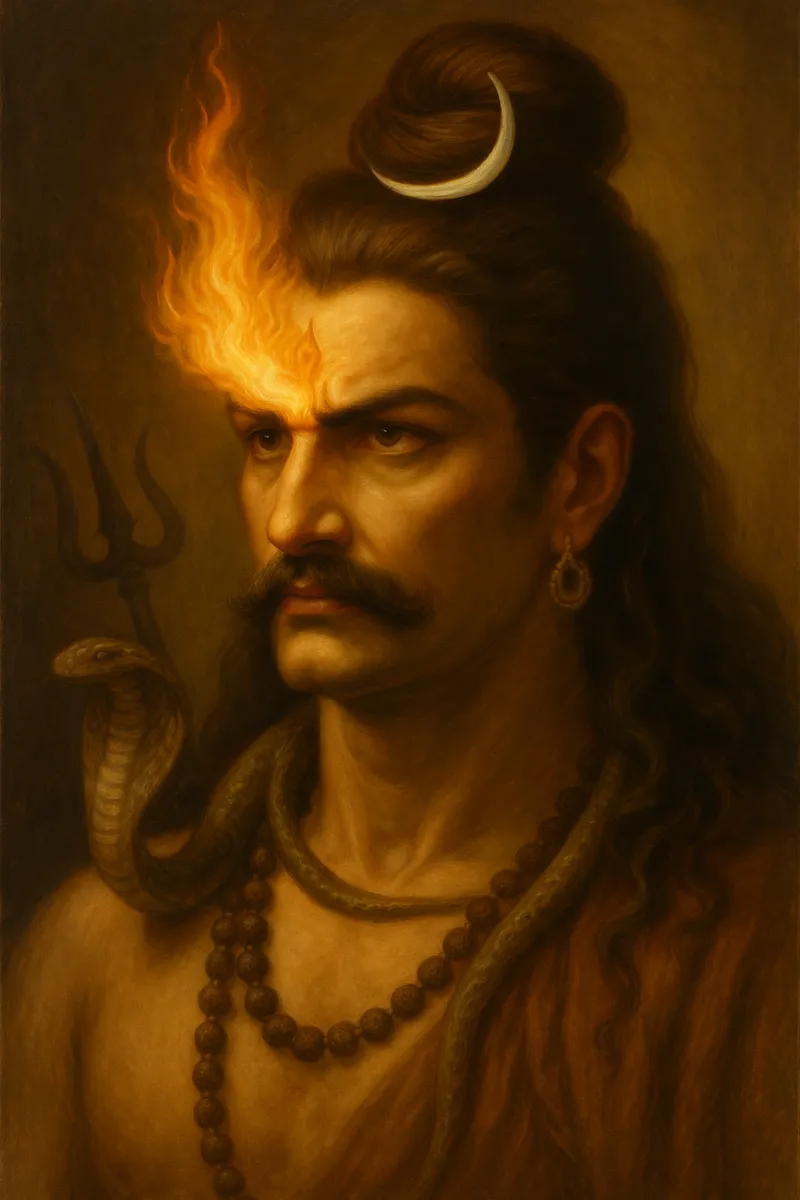
Murugan inherits this fiery essence and expresses it through divine intelligence, spiritual courage, and the relentless annihilation of darkness, both external and internal. His birth itself is a testament to his Agni nature, born from Shiva’s fiery seed that could not be contained even by Agni Deva himself and had to be carried to the Saravana forest, where six divine sparks became six babies and were later united into one by Goddess Parvati.
The Role of Lord Shiva (Rudra) in Murugan’s Creation
The involvement of Lord Shiva, Rudra, in the creation of Murugan who represents the divine intent of spiritual purification and victory over adharma (unrighteousness). Lord Shiva, in his Rudra form, represents the ultimate destroyer of ego, illusion, and attachment. When the need arose to destroy the demon Tarakasura, who could only be defeated by Shiva’s son, the divine will unfolded through intense turn of cosmic events.
Shiva’s third eye, symbolizing supreme spiritual vision, released the fire of divine will. This fire, inseparable from Agni, became the seed of Skanda (Murugan). Thus, Murugan is born not only from Agni but also from Shiva’s resolve, making him the spiritual heir of destruction and transformation, the very forces needed to purify the soul.
Purifying Energies and Inner Transformation
When we say the Subramanya Yantra channels purifying energies, we are referring to the Yantra’s ability to help remove inner impurities such as ignorance, fear, pride, lust, greed, jealousy, and inertia. In spiritual terms, purification means the removal of karmic residues and psychological patterns that cloud the soul’s radiance and prevent spiritual ascent.
Sri Murugan, as a deity, is deeply connected to this process of purification. He is not a distant god who merely rewards devotion with boons. Rather, he is the divine warrior within, who slices through the illusions and psychological demons that plague human life. His spear (Vel) is symbolic of spiritual discrimination (Viveka), the ability to cut through falsehood and reveal truth.
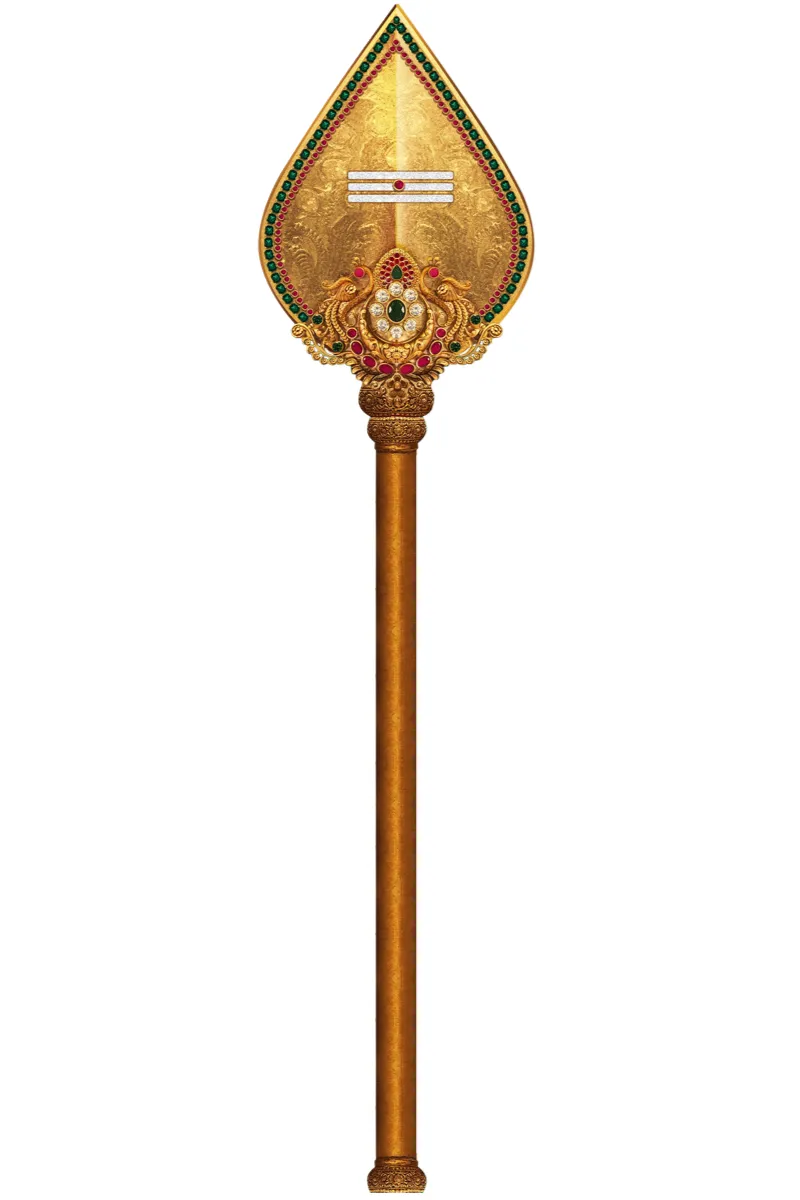
Murugan’s own life is filled with episodes of purification, be it the destruction of Surapadman, the acceptance of ascetic life before divine battle, or his renunciation of ego to reconcile with his family. His consorts, Valli and Devasena, themselves symbolize the union of desire and discipline, reminding us that both worldly life and spiritual renunciation must harmonize.
How the Yantra Facilitates This Process
When properly energized and meditated upon, the Subramanya Yantra becomes a mirror of Murugan’s nature. It channels the cosmic fire of Agni and the spiritual determination of Rudra into the devotee’s subtle body. This results in a gradual but steady cleansing of mental patterns , awakening of higher awareness, and alignment of one’s life with dharma (cosmic order).
As a result, the devotee experiences an increase in inner clarity, motivation for sadhana (spiritual practice), reduction in toxic emotional tendencies, and spontaneous gravitation toward wisdom, purity, and truth.
In this way, the Subramanya Yantra does not merely protect from external threats; it purifies the soul for divine realization, mirroring the sacred story of Lord Murugan himself, who was born not only to slay a demon but to re-establish balance, protect the innocent, and embody the highest truth.
Subramanya Yantra: A Gateway to Spiritual Fulfillment
By harnessing the energies preserved in the Subramanya Yantra, devotees gain access to powerful, transformative vibrations intrinsic to Lord Murugan. These energies are multi-dimensional in nature, harmonizing physical, mental, emotional, and spiritual planes within an individual’s existence. The Yantra encapsulates the sacred sound vibrations of the Shadakshari mantra “Sa-Ra-Va-Na-Bha-Va,” resonating deeply with cosmic frequencies associated with Lord Murugan.
Each syllable emits a specific energy, “Sa” emits charisma and attraction, “Ra” enhances prosperity, “Va” clears negativity and obstacles, “Na” protects from enemies, “Bha” ensures magnetic charm, and the second “Va” dispels planetary afflictions, especially the afflicted Mars in your Birth-Chart. Together, these potent vibrations unify to create an energetic shield and beacon of positivity, significantly enhancing the devotee’s spiritual and material life.
The transformative power embedded in the Subramanya Yantra refers explicitly to profound internal shifts within a devotee’s consciousness and aura. Regular meditation and worship of the Yantra instigate a deep purification process, cleansing one’s subtle energy channels (nadis) and chakras. As these blockages dissolve, the devotee experiences increased clarity, intuition, and a heightened spiritual perception. Negative patterns, habitual mental loops, and karmic limitations slowly fade away, replaced by an expansive state of inner peace, optimism, and spiritual insight.
This profound transformation paves the way for genuine spiritual enlightenment. As the devotee’s energetic field strengthens, their vibrational frequency rises to resonate with higher spiritual realities. It becomes easier to perceive subtle spiritual guidance and divine messages, as well as to recognise opportunities for spiritual growth that might have previously gone unnoticed. The continuous chanting and spiritual discipline required to energize and maintain the Yantra elevate the devotee’s state of awareness, significantly accelerating their spiritual evolution.
One significant manifestation of this spiritual elevation is the increased likelihood of attracting a genuine spiritual Guru into one’s life. As the devotee aligns deeply with Lord Murugan’s vibrations through the Yantra, they emit an energetic signature of sincerity, devotion, and readiness for higher wisdom. Gurus, who themselves function from elevated spiritual states, intuitively sense and respond to these vibrations.
Thus, maintaining a dedicated practice with the Yantra not only purifies and prepares one’s spiritual receptivity but also creates circumstances conducive to meeting a true Guru. This connection becomes a pivotal turning point, as a Guru’s guidance can profoundly accelerate the devotee’s journey toward spiritual liberation.
Moreover, when the term “divine vibrations” is used in the context of the Subramanya Yantra, it refers explicitly to shifts occurring within the devotee’s aura and subtle body. The aura, an electromagnetic field surrounding every living being, captures and reflects one’s mental, emotional, and spiritual states. Negative thoughts, stress, and past traumas often manifest as disturbances or blockages in the aura, diminishing vitality and spiritual receptivity.
Regular worship and chanting before an energised Yantra systematically eliminate these energetic disturbances, purifying and brightening the aura significantly.
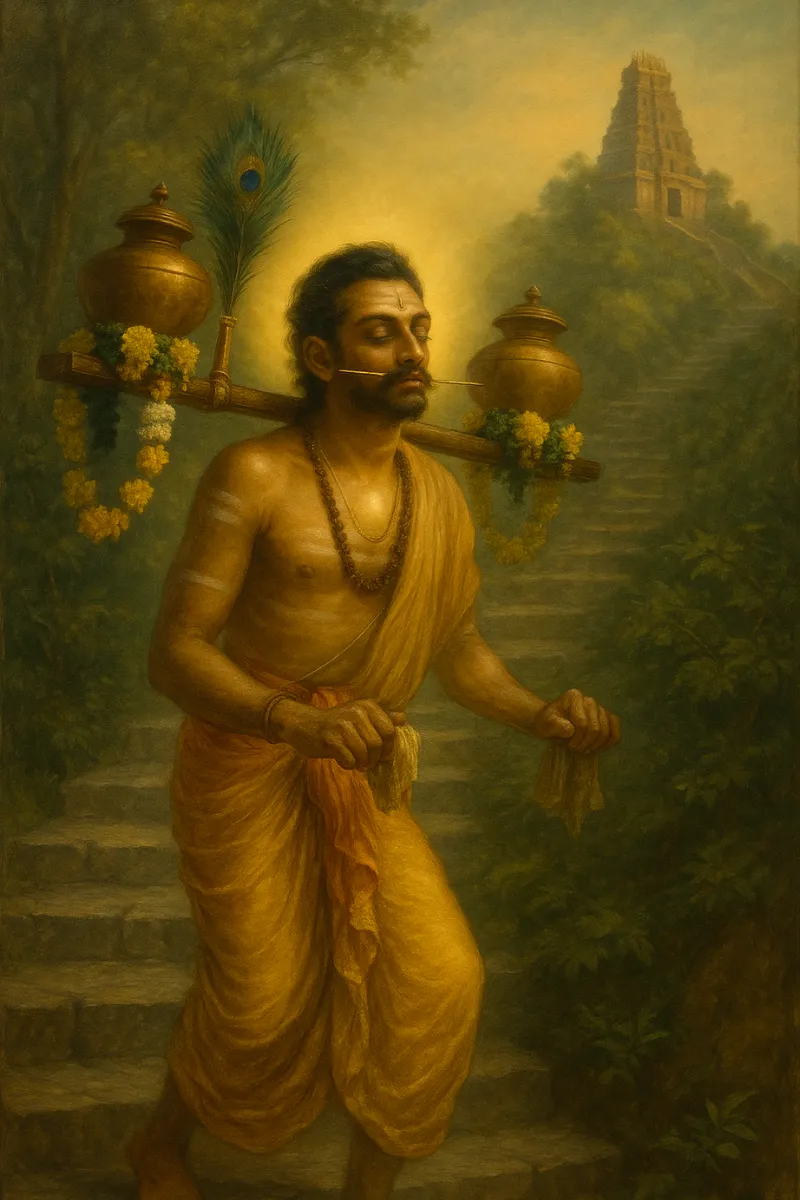
As the devotee’s aura cleanses and strengthens, it begins to radiate powerful divine vibrations. These radiant frequencies attract beneficial experiences, people, and opportunities into their life. Additionally, as one’s aura becomes more vibrant and balanced, it enhances mental clarity, emotional stability, and spiritual receptivity. Such alignment allows a more seamless flow of divine inspiration and guidance, further propelling the individual toward spiritual enlightenment and higher states of consciousness.
Furthermore, consistent engagement with the Subramanya Yantra aligns the devotee with Murugan’s martial and protective energies, fortifying their resilience against external negativity and inner fears. This fortified energetic state promotes confidence, courage, and an unwavering focus on spiritual objectives, enabling devotees to overcome challenges effortlessly and maintain equanimity during life’s trials.
In essence, the transformative power of the Subramanya Yantra is holistic, impacting every facet of the devotee’s life, be it physical, emotional, mental, or spiritual. Through this profound energetic transformation, devotees not only secure material blessings such as wealth, success, and protection but also cultivate deep, lasting spiritual enlightenment. The Yantra thus becomes a potent tool, guiding devotees toward their ultimate goal of spiritual liberation, divine communion, and sustained inner fulfillment.
Conclusion
The Subramanya Yantra, grounded deeply in Vedic lore and energized through traditional rituals, is indispensable for devotees aiming for profound spiritual and material growth. As a repository of Murugan’s divine energies, it continues to bestow blessings, safeguarding and guiding devotees towards ultimate spiritual fulfillment and worldly success.

